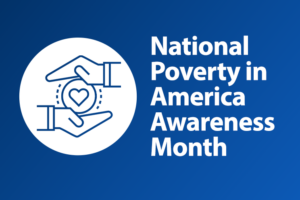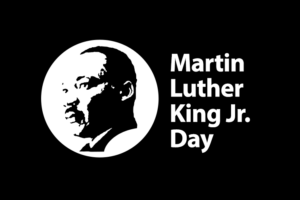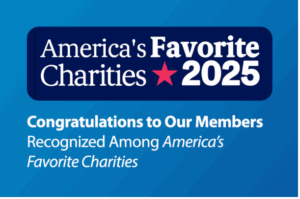Sarah Ford, Marketing Director, America's Charities | December 1, 2020
How Employers Can Address Employees’ Financial Hardships, Wage and Income Loss, Medical Bills, and Other Needs Due to COVID-19
This blog was originally posted on March 24, 2020, and was updated on December 1, 2020, to reflect new information.
Childcare. Utilities. Medical bills. To many of us, these are just typical, everyday costs of living and working. For others, these are a few common causes behind serious financial hardship, often forcing someone to choose between medicine, electricity, food, or shelter. In some dire situations, these can even be the make-or-break reasons that lead to someone becoming homeless.
The coronavirus (COVID-19) has only compounded these existing hardships, which employees nationwide have been grappling with for years.
When I first published this article in March, the unprecedented ‘shelter in place’ and ‘social distancing’ restrictions across the country were just starting to be enforced. Some individuals immediately found themselves jobless, while others faced a temporary pay cut.
Now, with several months of navigating this new reality under our belt, we’re realizing there is nothing “temporary” about any of this. And there is still a great deal of uncertainty – both for employees unsure about their long term job outlook and for employers steering the long-term sustainability of their workforce and business.
Fortunately, there is a remedy employers can use to demonstrate how much they really care about their employees’ well-being and mitigate the financial hardship those employees may be facing. That solution is called an Employee Assistance Fund (EAF).
Also known as an Employee Crisis Fund, Emergency Assistance Fund, or Employee Hardship Relief Fund (it goes by many names), an EAF is a fund a company can set up to help employees and their families overcome financial hardships and emergencies. In the early days of the pandemic, we had a tremendous surge in employers reaching out to us for help setting up EAFs. While the government’s initial round of stimulus checks was enough to help some individuals and families make ends meet, for others the response fell short or was not instituted fast enough. That’s where we saw EAFs play an extremely valuable role. The feedback we received from employers about the ease of setting up the whole process and the notes of heartfelt gratitude we received from the employees who were awarded grants from their employer’s EAF was humbling to say the least.
“Thank you for helping Berkshire Bank get our EAF up and running so quickly. It was a super smooth process and the America’s Charities team was great to work with, providing relevant insights that helped us rapidly create a program to meet our employees’ needs today and into the future.” — Gary R. Levante, SVP, Corporate Responsibility & Culture, Berkshire Bank
It appears we have several more challenging months ahead as a country, but together we can get through it. EAFs can help ensure employees located across the United States and internationally have enough money to keep food on the table and a roof over their heads, so they can continue contributing to the workforce we rely on so much—all of which keeps our global economic engine running strong.
For employers interested in offering EAFs, our team at America’s Charities is here to help. We have served more than 120 companies, processed more than 20,000 employee applications for grants, and administered more than $20 million in EAF funding.
No industry has gone unscathed either. Reaching more than 1.5 employees in the United States and internationally, our EAF employer clients have included educational institutions, healthcare providers, manufacturers, hospitality companies (food service and lodging), real estate agencies, pharmaceutical companies, fitness providers, and technology, financial, and other professional service organizations.

A majority of these employers utilized America’s Charities’ Qualified Disaster Immediate Assistance Program, which allowed them to act swiftly and provide immediate relief to employees within days of launching their program. Many of those companies are now in the process of expanding their program so that they can have a more permanent solution to address a wider range of employee hardships in the long run, long after there’s a cure for COVID-19.
If an EAF sounds like something your company would like to deploy, here are some common questions and use-cases we’ve heard throughout these past months that you should take into consideration as you get started.
“Many employers who have approached us specifically want to set up an EAF as a way to replace lost income for those impacted by COVID-19. While an EAF technically does that, there are nuances on how it needs to be set up,” stated Jim Starr, president and CEO of America’s Charities.
Jim has personally fielded many of the EAF requests that America’s Charities’ business development team has been swelled with recently. With the influx of EAF requests, I asked him if he could share some important things companies need to consider as they explore setting up an EAF, specifically as it relates to COVID-19.
Here are some highlights of what he had to share:
- An EAF is Not to be Used to Replace Lost Wages. Some companies approaching us are in a challenging position where they have to lay off employees. Naturally, they want to do anything they can to legally replace their employees’ lost wages. But an EAF cannot simply replace lost income. It CAN, however, be used to cover expenses that a person is unable to meet as a result of that income loss. For example, let’s say an employee has a loss of $2,000 in household income due to lost wages because of the coronavirus. While an EAF can’t directly replace that income loss with a $2,000 grant, the EAF can provide a grant to cover rent or essential utility bills. For purposes of this example, let’s say those bills total $1,000. The company’s EAF can be used to grant a $1,000 for those bills. So, while the money granted through the EAF isn’t replacing the employees’ entire $2,000 income loss, it is helping mitigate wage loss and hardship by helping cover bills that the employee no longer has income to cover.
- An EAF Cannot Solely be Established to Provide Relief for COVID-19. An EAF cannot be established to provide relief for a specific event or disaster like COVID-19. It must be available for a category of events such as “Qualified Disasters” or “Financial Hardships.” A company could set up a category like “Qualified Disasters” (or presidentially declared disasters, of which the coronavirus is one) through its EAF. In doing so, employees would be able to apply for assistance related to hardships caused by COVID-19, as well as any other presidentially-declared disasters that may occur in the future.
- An EAF Must Have a Charitable Class that is “Large.” There is no specific definition of what that is, so the way to meet that standard is to make the charitable class “indefinite” (open to current and future employees). Additionally, a company is welcome to include whomever they want in their charitable class, meaning they can include retirees, contractors, or even non-household family members of an employee.
These are just a few distinctions and requirements companies should keep in mind when exploring EAFs as a way to help employees through hard times and turning CSR efforts inward – specifically as it relates to this coronavirus pandemic. You can hear even more insights by watching this conversation between Jim and SmartSimple’s Senior Platform Solution Manager Dan Eardley about what EAFs are, what they’re not, and some common use cases from organizations that have EAFs.
If you are ready to move forward with the next steps, our team is happy to dive into details with your company and explore the best option for what you are trying to accomplish. And as our team continues to field an increasing demand for EAFs, we are humbled that you have reached out to us to assist you. Thank you, and hang in there. We are all in this together.

Get Resources and Insights Straight To Your Inbox
Explore More Articles
Congratulations to Our Members Recognized Among America’s Favorite Charities
Each year, The Chronicle of Philanthropy releases its list of America’s Favorite Charities—the 100 nonprofits that raise the most from individual donors, foundations, and corporate…
Read ArticleGet Resources and Insights Straight To Your Inbox
Receive our monthly/bi-monthly newsletter filled with information about causes, nonprofit impact, and topics important for corporate social responsibility and employee engagement professionals, including disaster response, workplace giving, matching gifts, employee assistance funds, volunteering, scholarship award program management, grantmaking, and other philanthropic initiatives.





